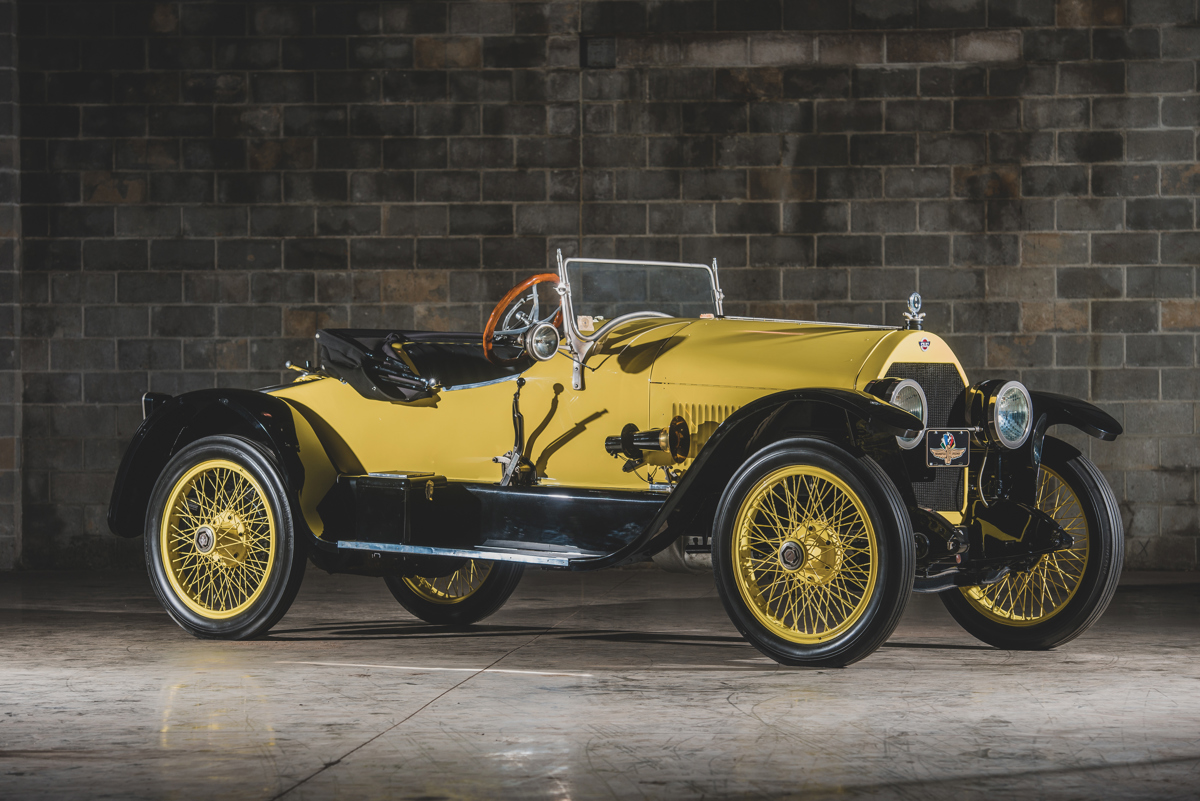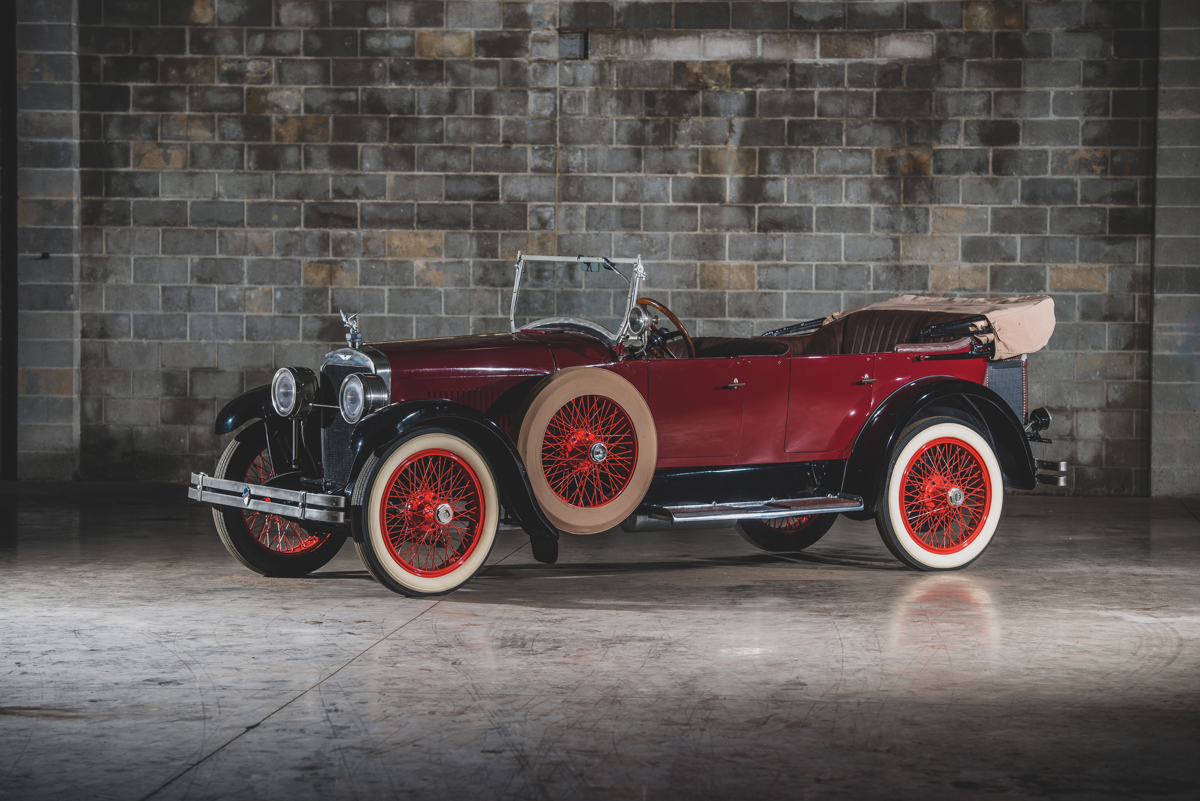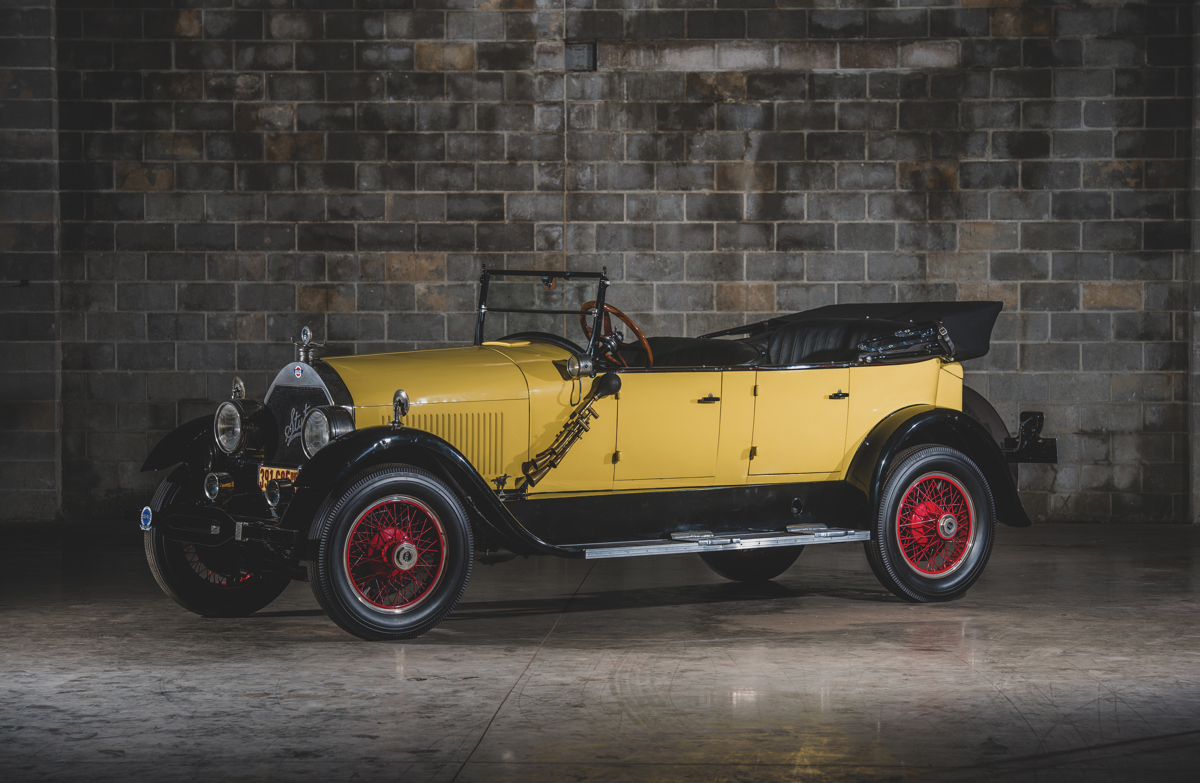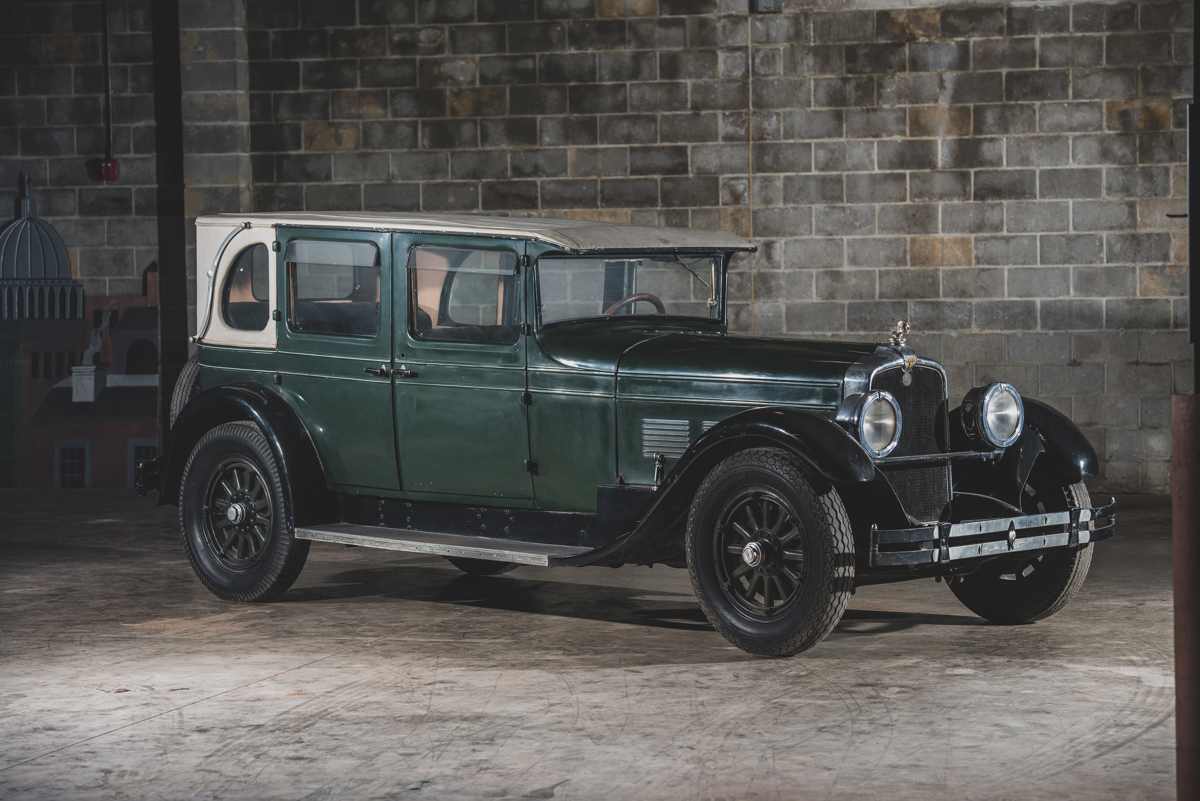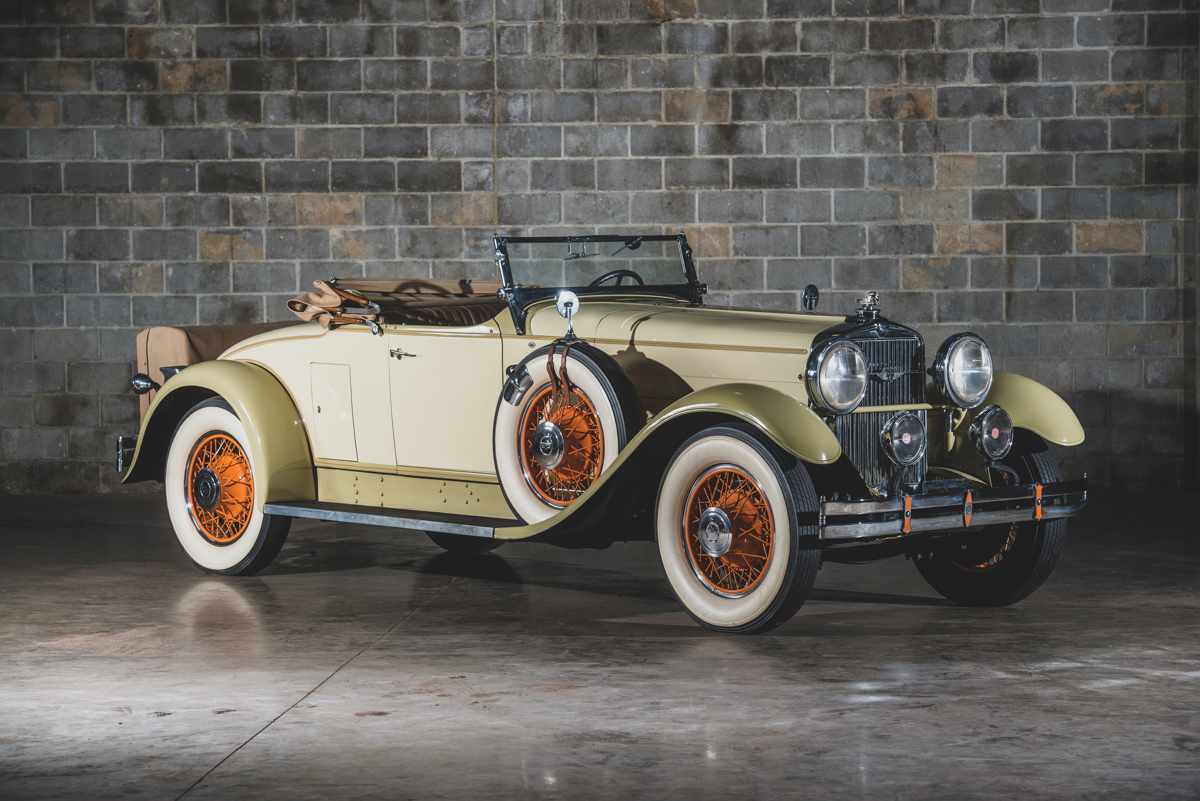The Stutz Motor Car Company only endured for a short period in history at just over two decades, although the mention of the marque will most likely elicit the memory of the Stutz Bearcat. It was not the first or last Stutz produced, but perhaps the one that most resonated with the public as automobile racing begun to garner interest from the public and early sports cars gained the admiration of the people.
Harry Stutz was naturally gifted with mechanical prowess, and his talents were evident early on in life. He assembled his first gasoline powered vehicle in 1898 in his youth while on his family’s farm in Ansonia, Ohio. He named his creation Old Hickory, which was compiled from discarded agricultural equipment components and capable of driving in forward and reverse under its own power. By 1906, he was employed by American Motors where he designed a 30-40 horsepower touring car. A year later, he joined Marion Motors as chief engineer, where he designed a rear axle-mounted transaxle. Stutz left Marion in 1910 to start his own venture, Stutz Auto Parts Company, with the financial backing of his friend Henry Campbell to manufacture the transaxle he had designed. During this time, Stutz was commissioned to design a car dubbed the Empire by the men who recently had the Indianapolis Motor Speedway paved with bricks. Designing the Empire motivated Stutz to create a vehicle entirely of his own, and the project paid well enough for him to undertake the task. In the short span of five weeks, he had created his first automobile. A 398cu-in Wisconsin T-head four-cylinder engine with four valves per cylinder was driven through one of his own transaxles and wore a minimalist open body. The first Stutz racer was entered into the inaugural Indianapolis 500-mile race immediately after completion, without any pre-race testing. His race car finished 11th of 22 entries, and shortly thereafter the Ideal Motor car company was formed with Campbell’s financial backing. The first cars began to come off the production line in 1911 and were essentially copies of the Indianapolis race car with the addition of lights and fenders. The Bearcat was born.
1922 Stutz Series KDH Bearcat
Estimate: $120,000 - $160,000 USD | Offered Without Reserve
By 1913, Ideal Motor Car Company had changed its name to Stutz Motor Car company, and Stutz Auto Parts Company had merged into it. The Stutz Bearcat had proven to be a success, and the company produced and sold well over 3,000 vehicles in its first four years of production. By 1920, the Bearcat evolved into a more refined sports car. It was still tremendously powerful for the time, using Stutz’s own sixteen valve four cylinder engine and performance based chassis. The body had a small passenger compartment to seat two, and no side doors.
1923 H.C.S. Series IV Touring
Estimate: $50,000 - $75,000 USD | Offered Without Reserve
Despite Stutz Motor Car company’s success, Harry Stutz and Henry Campbell left Stutz Motor Company to form H.C.S Motor Company, named after Harry Clayton Stutz’s initials. The duo began producing expensive, sporty vehicles to rival those of Stutz’s own namesake. The H.C.S. Series IV touring utilized a Midwest six-cylinder engine with overhead valves, aluminum crankcase and oil pan, and split driveshaft with torque tube—technically advanced and well engineered for the time period.
1925 Stutz Series 695 Sportster
Estimate: $120,000 - $160,000 USD | Offered Without Reserve
For the first time since the company’s inception in 1911, Stutz Motor Car Company developed a completely new engine called the Speedway Six—an overhead valve six-cylinder engine capable of 80 horsepower, an impressive figure for the time period considering it created more horsepower than competitors with two more cylinders. Paired with a highly capable performance chassis and excellent brakes, the Speedway Six chassis upheld the Stutz standard of engineering and power. The five passenger Sportster body was perhaps the most desirable of the styles offered, and this example from The Guyton Collection is the last remaining in existence.
1926 Stutz Model AA Vertical Eight Brougham by Brewster
Estimate: $25,000 - $35,000 USD | Offered Without Reserve
The new owners of Stutz Motor Company brought in Ewan Moscovics, who quickly refocused the brand toward creating safety cars—which had become a common theme of the period. The Model AA became known as the “Safety Stutz,” and was the first model to feature a “shatterproof” wire-glass windshield with narrow pillars for added visibility, and a lower center of gravity courtesy of the adoption of worm gear differential which allowed the body to be mounted low on the chassis and the driveshaft to be mounted below the rear axle. The 90 horsepower, single overhead camshaft eight-cylinder engine provided plenty of power through a three speed manual transmission to live front and rear axles, and utilized four wheel drum brakes to bring the large sedan to a halt.
1930 Stutz Model M Two-Passenger Speedster by LeBaron
Estimate: $150,000 - $200,000 USD | Offered Without Reserve
The stock market crash of 1929 would heavily impact sales for middle to upper priced passenger cars. Nevertheless, Stutz continued to produce some of its finest cars during the height of the Great Depression. The Model M were the last Stutz vehicles produced under the leadership of Moscovics, and featured a 322 cubic inch overhead valve inline eight-cylinder engine with a dual throat, a configuration that produced 113 horsepower and 226 ft-lb of torque at 1600 rpm. The Model M was offered in a variety of body styles from numerous coach builders. The Model M from The Guyton Collection was produced as a “catalog custom” from famed coachbuilding firm LeBaron, and bears the same badging and body number plates of LeBaron Mormon and Duesenberg bodies of the same era.
Toward the close of the 1920s, the Stutz Motor Company was involved with a number of lawsuits, including a breach of contract regarding engine building and over the design of the low slung worm gear that they had been using. The dwindling sales figures and the Great Depression proved to be crippling: production in 1930 yielded only 1500 cars and steadily dwindled until only six Stutz cars were produced for 1934. The factory closed its doors the same year, and the Great Depression added Stutz to the list of automobile manufacturers who succumbed to its impact.


